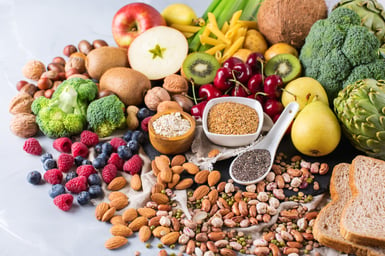 What you eat before hitting the gym can significantly impact your performance and recovery. The right pre-workout nutrition can help fuel your workout, prevent fatigue, and optimize results. Here’s a guide on what gym-goers should consider eating before a workout.
What you eat before hitting the gym can significantly impact your performance and recovery. The right pre-workout nutrition can help fuel your workout, prevent fatigue, and optimize results. Here’s a guide on what gym-goers should consider eating before a workout.Timing Your Pre-Workout Meal
Timing is crucial when it comes to pre-workout nutrition. Aim to eat 30 to 60 minutes before your workout. This allows your body some time to digest and utilize the nutrients for energy without feeling too full or sluggish.
Carbohydrates: Your Primary Fuel Source
Carbohydrates are your body's preferred source of energy, especially during high-intensity workouts. Aim for 30-45 grams of easily digestible carbs before your workout. Carbs help maintain blood glucose levels and maximize glycogen stores, which are essential for sustained energy. Good options include a banana, a slice of whole-grain bread with honey, or a handful of pretzels.
Moderate Protein for Muscle Support
Including a moderate amount of protein in your pre-workout meal can help support muscle repair and growth. Consuming around 10-20 grams of protein before your workout provides your muscles with the amino acids they need to begin the recovery process even before you start exercising. This can enhance muscle protein synthesis and improve overall workout performance. Opt for sources like a hard-boiled egg, a couple of slices of turkey, string cheese, or a small portion of cottage cheese. These options are easy to digest and work well alongside carbohydrates to fuel your workout.
Low Fat for Quick Digestion
While fats are an essential part of your diet, they should be limited before a workout. Fat slows digestion, which can make you feel sluggish and uncomfortable during exercise. Stick to low-fat options and save the healthy fats for your post-workout meal.
Keep Fiber in Check
Fiber is crucial for overall health, but too much fiber right before a workout can cause gastrointestinal discomfort. Foods high in fiber take longer to digest and can lead to bloating or cramping during exercise. Opt for lower-fiber options like pretzels, a bit of granola, or rice cakes.
Hydration is Key
Don’t forget about hydration. Drink 16-20 ounces of water about two hours before your workout and another 8-10 ounces 20 minutes before starting. Proper hydration ensures optimal performance and helps prevent dehydration-related issues like cramps and dizziness.
Sample Pre-Workout Snacks
- Banana with a small handful of almonds: Provides a balance of carbs and protein without too much fat or fiber.
- Whole-grain toast with honey and a slice of turkey: Combines carbs and protein, low in fat, and easy to digest.
- Pretzels with a low-fat cheese stick: Provides a good mix of carbohydrates and protein without adding too much fat.
Choosing the right pre-workout nutrition can make a big difference in your gym performance. Aim for a balanced meal that’s high in carbs, moderate in protein, low in fat, and easy to digest. Remember, what works best can vary from person to person, so it may take some experimenting to find your ideal pre-workout snack. Listen to your body and adjust as needed to fuel your workouts effectively.
Fuel right, perform better, and enjoy your workouts to the fullest!
If you need assistance in finding your ideal pre-workout snack, feel free to contact Michael Horner, RD, LD.


 Shakira was onto something when she said, “My hips don’t lie.” Poor hip strength and mobility can lead to negative effects like lower back pain, poor posture, knee pain, and impaired balance, which is why improving hip health is crucial. But how can you build hip strength and mobility without a hip adductor and abductor machine? Read on to discover effective exercises to enhance hip strength!
Shakira was onto something when she said, “My hips don’t lie.” Poor hip strength and mobility can lead to negative effects like lower back pain, poor posture, knee pain, and impaired balance, which is why improving hip health is crucial. But how can you build hip strength and mobility without a hip adductor and abductor machine? Read on to discover effective exercises to enhance hip strength!